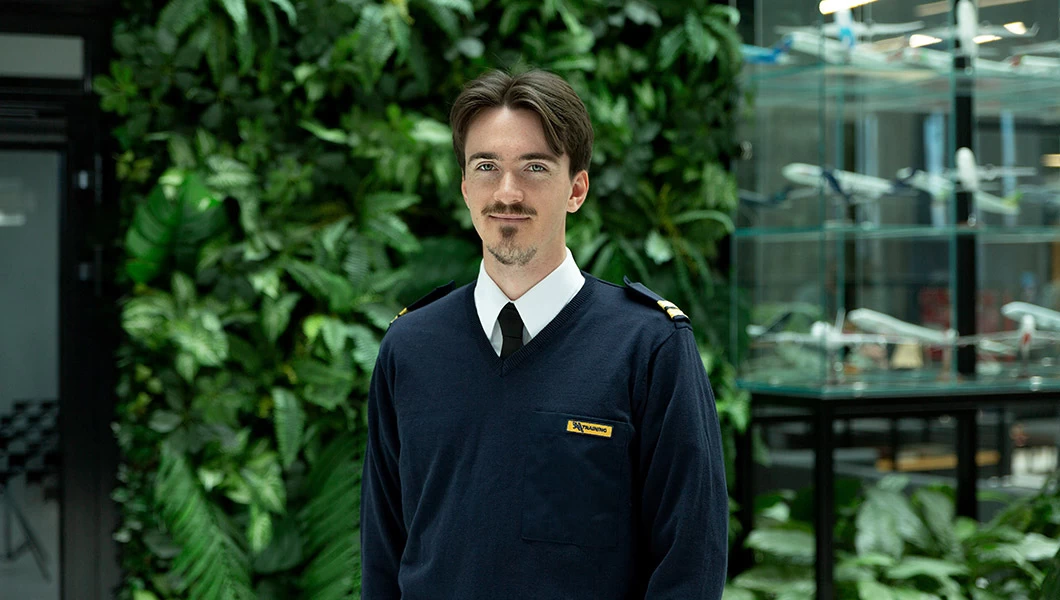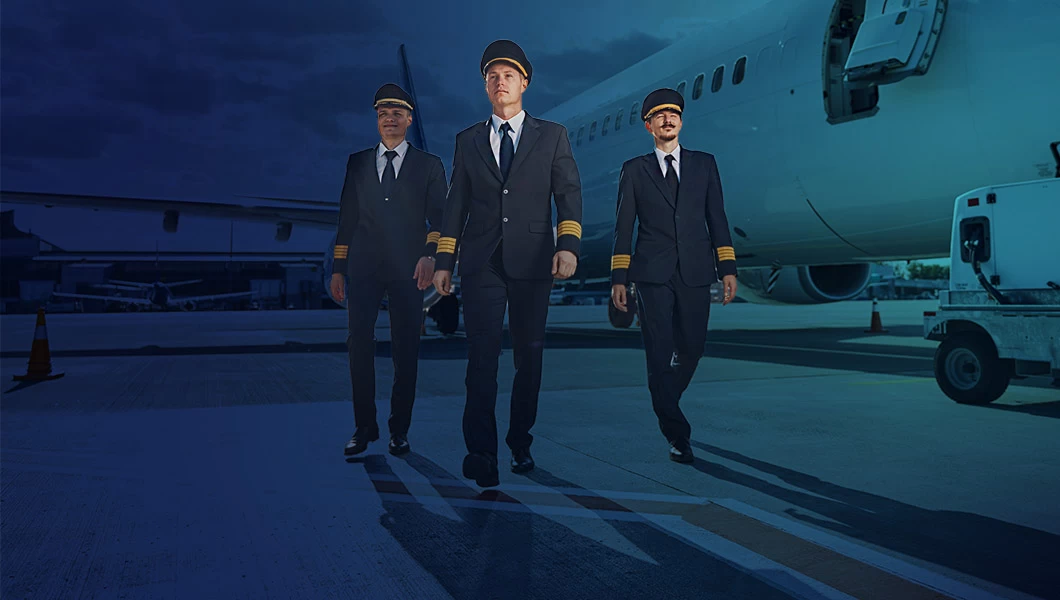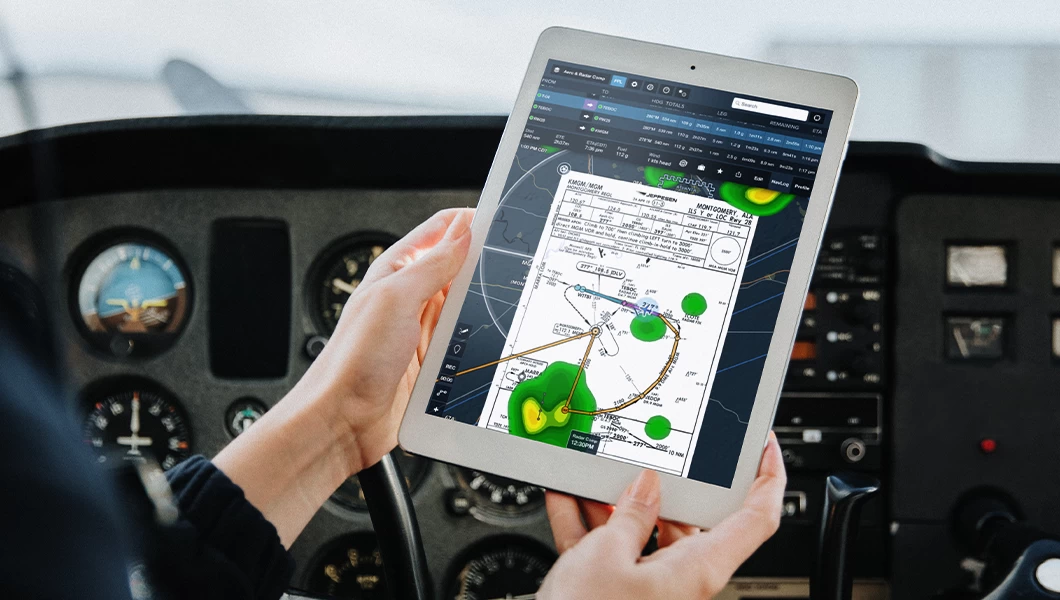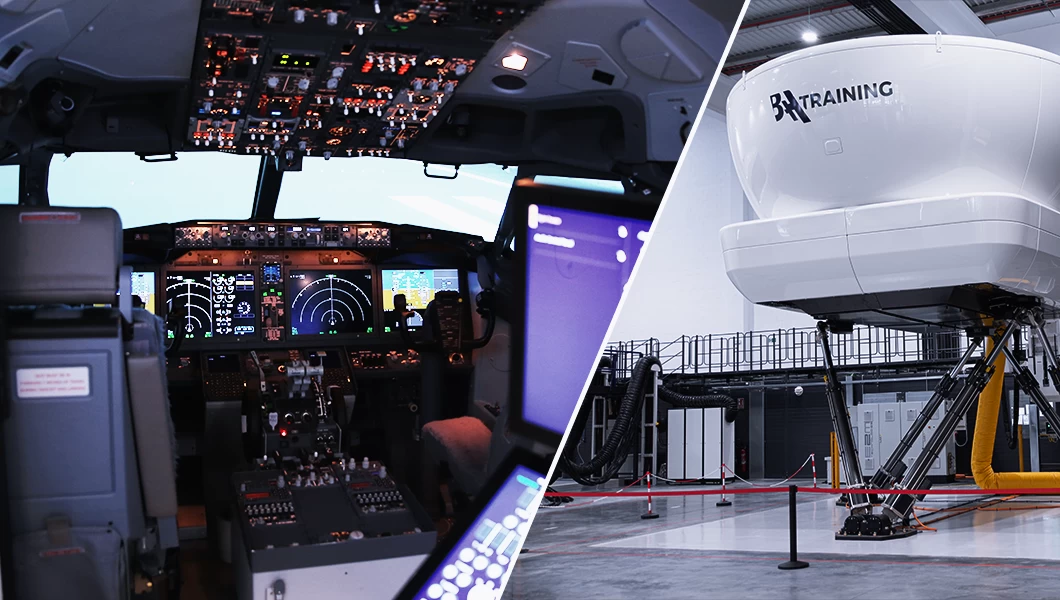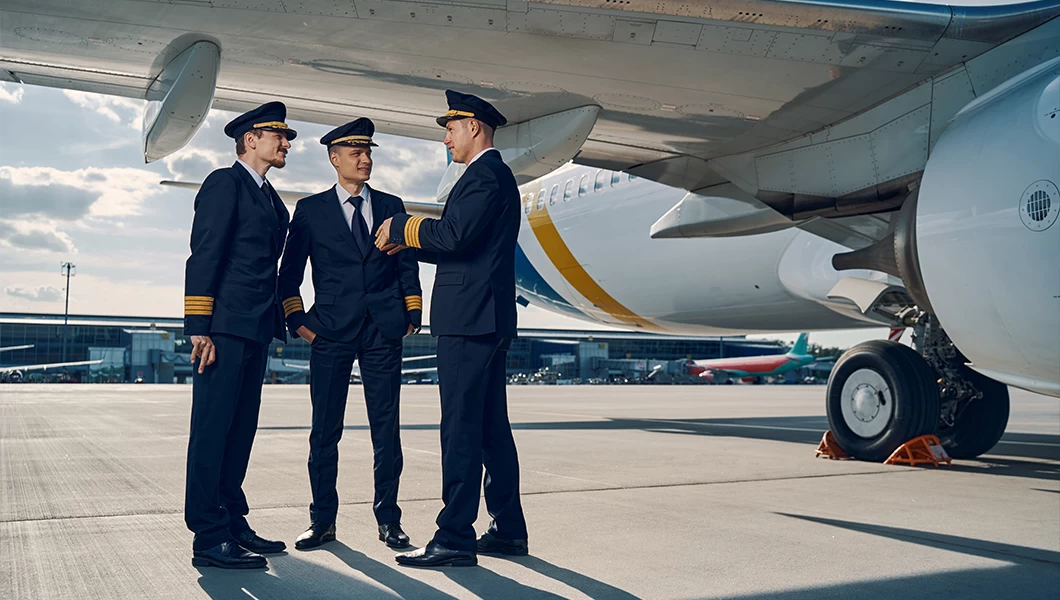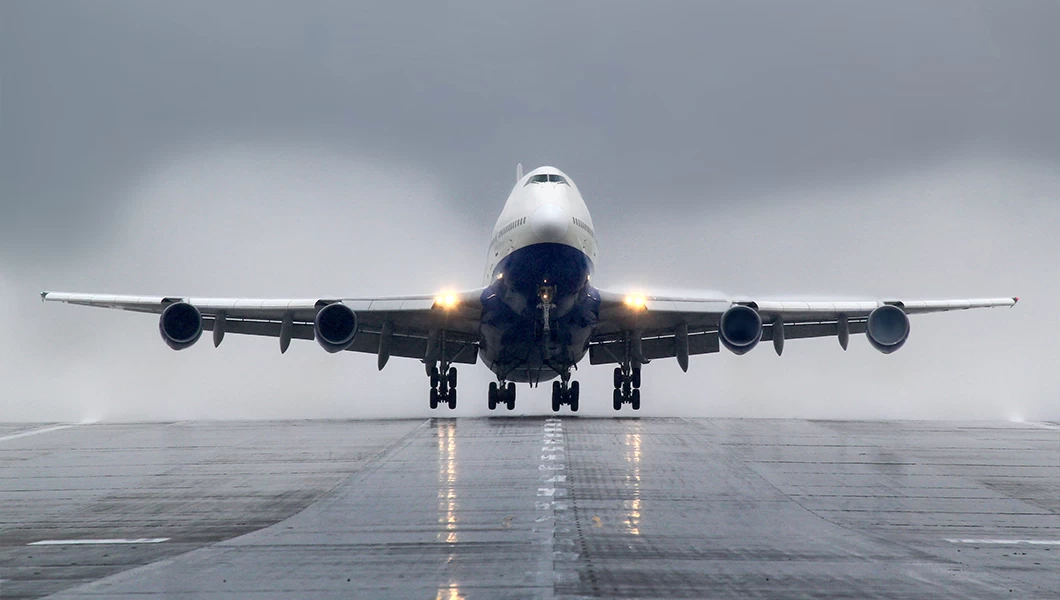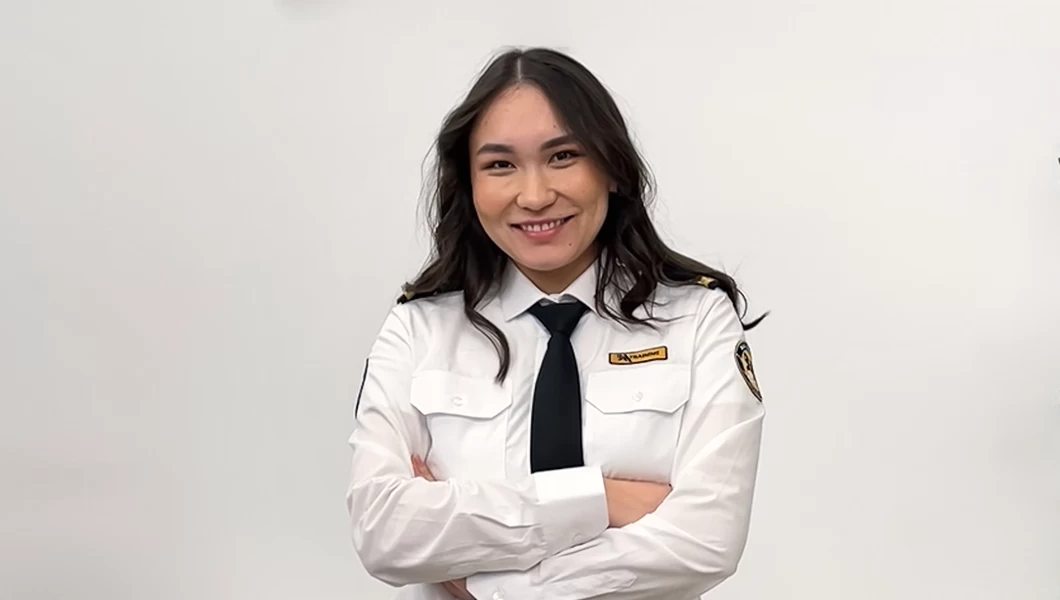Background of pilot uniforms
Pilot uniforms were introduced by Pan American World Airways, a major international airline that operated from 1927 to 1991. After the Boeing 314 flying boat (called Clipper) entered service at Pan Am in the late ’30s, the management decided to require the pilots to wear naval officer-inspired formal apparel.
The uniform consisted of black trousers, a blazer with stripes signifying the rank, an officer-style cap, and a badge with a name. Although pilot uniforms have more modern materials and color patterns nowadays, they still maintain the essential elements associated with them for decades.
The traditional pilot uniform often features a tailored jacket with rank stripes (also called pilot bars) on the shoulders or sleeves, indicating the ranks of airline pilots.
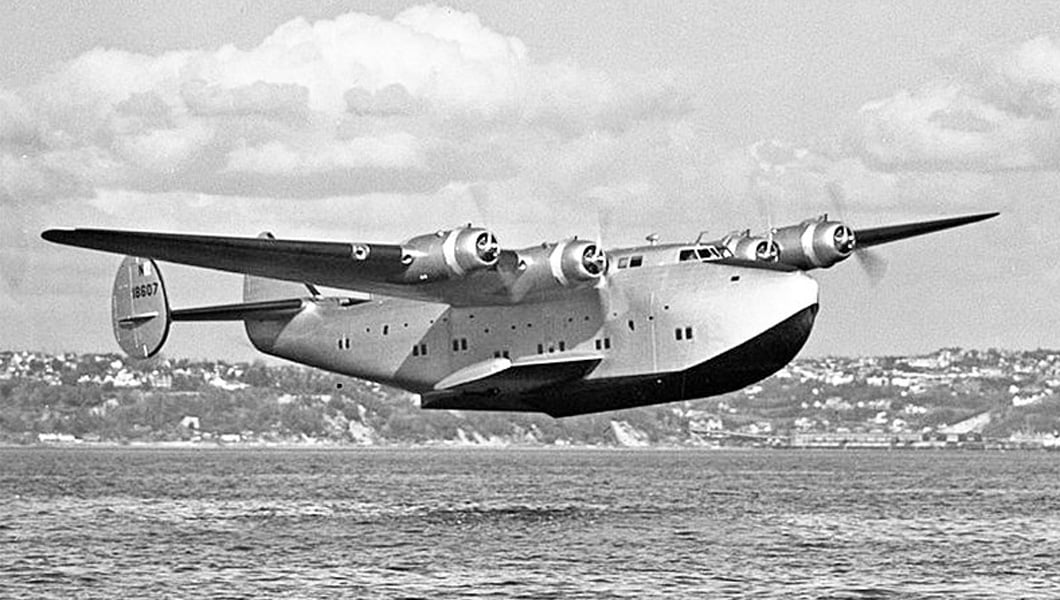
Student Pilot (1-2 stripes)
A student pilot is someone who is undergoing professional training to become an airline pilot one day. They typically wear one or two stripes on their shoulders or sleeves. The exact number is up to an aviation authority and/or their training organization.
At BAA Training, we give all our students a uniform that is mandatory to wear during ground school and flight school: tailor-made uniforms for the theory part and pilot shirts for flights. Throughout their training, they wear two pilot stripes on their shoulders. As they progress further in their aviation journey, they will start earning additional stripes.
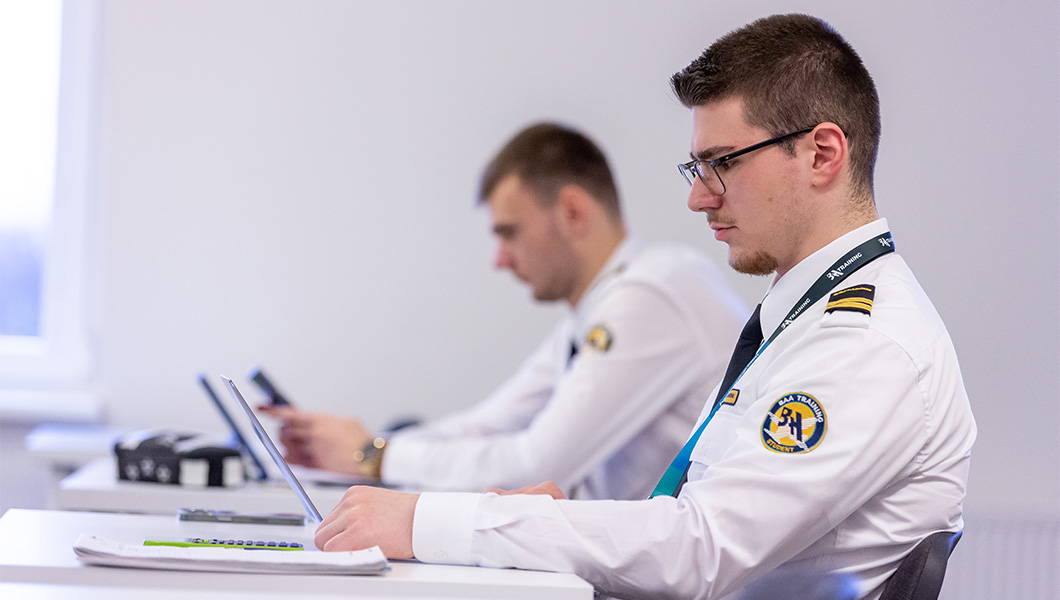
Second Officer (2 stripes)
The Second Officer holds the third position in the aircraft’s command hierarchy and sits behind the Captain and First Officer to ensure sufficient rest periods for each pilot during long-haul flights. However, only a few airlines have this junior position in the flight deck, and they are definitely not regional airlines that perform 2-3 hour flights. A Second Officer could be recognized by the two stripes on their uniform (sometimes Cabin Crew also wear two).
It is important to note that a fresh pilot graduate can confidently apply right away for a First Officer’s role. So the Second Officer step can usually be „omitted“ when building a pilot career.
First Officer (2-3 stripes)
Once a student pilot has nailed the fundamental skills and knowledge, they can apply for a position at an airline. There, they would essentially be First Officers (also called co-pilots) taking the right seat in the cockpit. The number of pilot uniform stripes on their uniform may vary depending on the airline, either two or three.
There is a common bias that First Officers do not actually fly the aircraft, but the Captains do. This is not true, as even the word „co-pilot“ implies that they fly in cooperation. A First Officer is the second in command of the aircraft after the Captain.
A First Officer plays a crucial role in flying an airplane by assisting in pre-flight preparations, participating in takeoff and landing procedures, managing flight systems, collaborating with the Captain, and providing support during emergencies and abnormal situations to ensure a safe and efficient flight.
Whenever the Captain gives them permission, they can take off and land the aircraft by themselves. A few destinations or weather situations may be deemed ‘Captain only,’ but otherwise, they are free to feel the joy of flying.
Certain airlines might also have a Senior First Officer position alongside the traditional First Officer position. A Senior First Officer is an experienced pilot with significant flight hours who holds a higher rank within the pilot hierarchy.
Captain (4 stripes)
Finally, we got to the most interesting part – the Captain position sitting on the left-hand seat in the cockpit. He or she is a senior-ranking flight crew member, proudly wearing four stripes, the maximum number of stripes a pilot can wear (there is no 5 stripes pilot).
Captains are expected to have the expertise, knowledge, and ability to make sound judgments in a dynamic and challenging environment. They are also legally responsible for the safety and operation of the aircraft and the well-being of everyone on board.
Many airlines have a minimum requirement of around 1,500 hours to 2,000 hours of flying experience to become a 4 stripes pilot on a commercial aircraft. However, this can vary considerably depending on the airline’s internal policies, the aircraft type, and the pilot’s performance and experience.
A Captain is typically the highest rank. However, in some airlines, there is a role of a Training Captain – an experienced pilot who not only performs regular captain duties, but also takes on the responsibility of training and evaluating other pilots (they also wear four Captain stripes).

It is well-known within the aviation industry that there can be instances where First Officers may hesitate or feel reluctant to speak up against captains, which may put flight safety at risk if preventive measures are not taken.
Your PILOT CAREER
starts with a first click
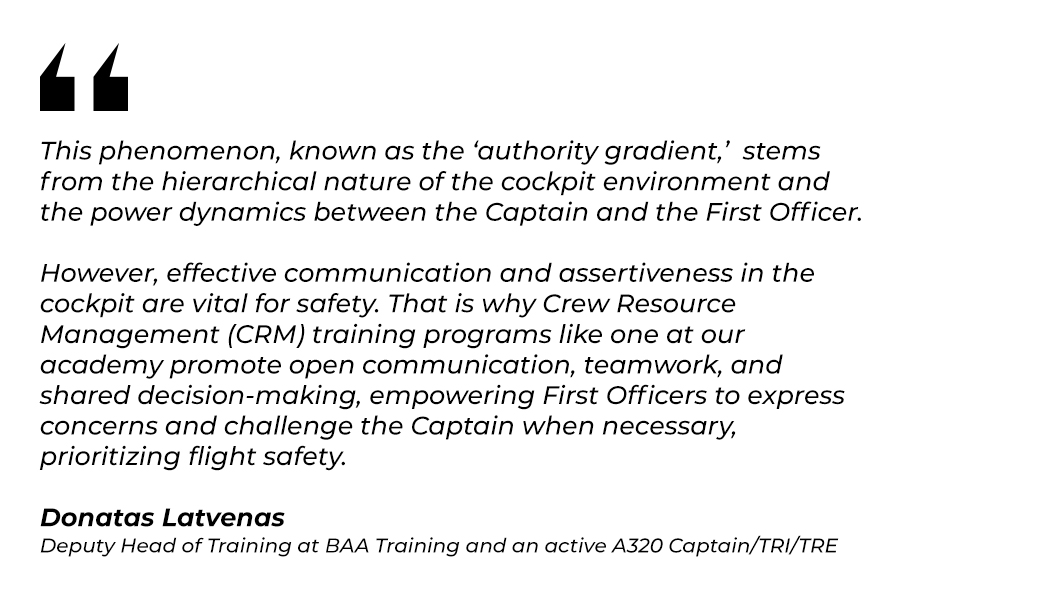
Why are the stripes useful?
You may wonder why everyone needs to know that someone holds a higher role than others. While it is not a common practice in other specialties, it makes much sense in aviation.
Whenever ground personnel, air traffic controllers, and other specialists encounter a specific matter that they need to resolve quickly, they can easily identify each pilot’s decision-making power and authority by the stripes on the pilot’s uniform. It promotes efficient coordination, effective communication, and seamless procedures.
Or think of it this way. Imagine you see a younger and a much older pilot wearing no stripes (this never happens in reality, but for the sake of understanding, try to visualize it). Based on the stereotypes and your logical thinking, you would probably conclude that the older one is a Captain, as theoretically, they must have had more time to accumulate those 1,500 to 2,000 flight hours. But in reality, the situation might be the opposite.
The older pilot might be a newcomer in the company but not a newcomer in aviation. In this industry, it is typical to lose your previous rank when moving. This is how the older pilot, who previously was more senior, might have found himself in the right-hand seat again. That is why the airline pilot uniform with stripes helps to avoid confusion and know precisely who bears what kind of responsibilities.

Summary
In conclusion, airline pilot ranks serve as a framework within the aviation industry, providing structure and defining roles and responsibilities. While aspiring to higher levels is a natural career goal, it is important to remember that true success as a pilot lies in consistently performing the job to the best of their abilities.
It is not about outshining others but rather about staying cool-headed, adhering to regulations and maintaining a strong commitment to safety. Pilots can excel in their careers and gain higher commercial pilot ranks by embodying these qualities and honing their skills.
But every journey starts with the first step, or in this case, the first stripe. Or two, if you join BAA Training!



